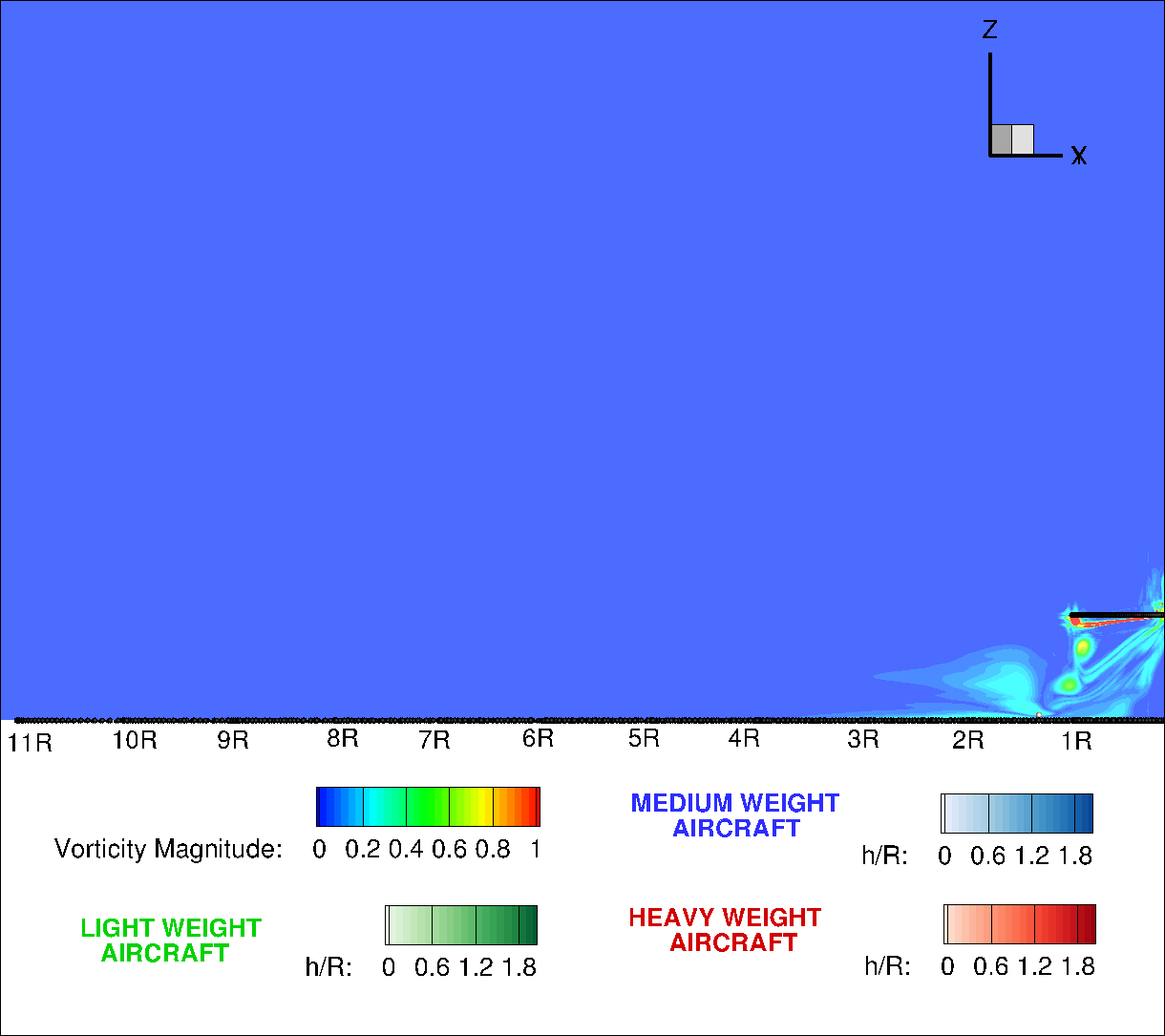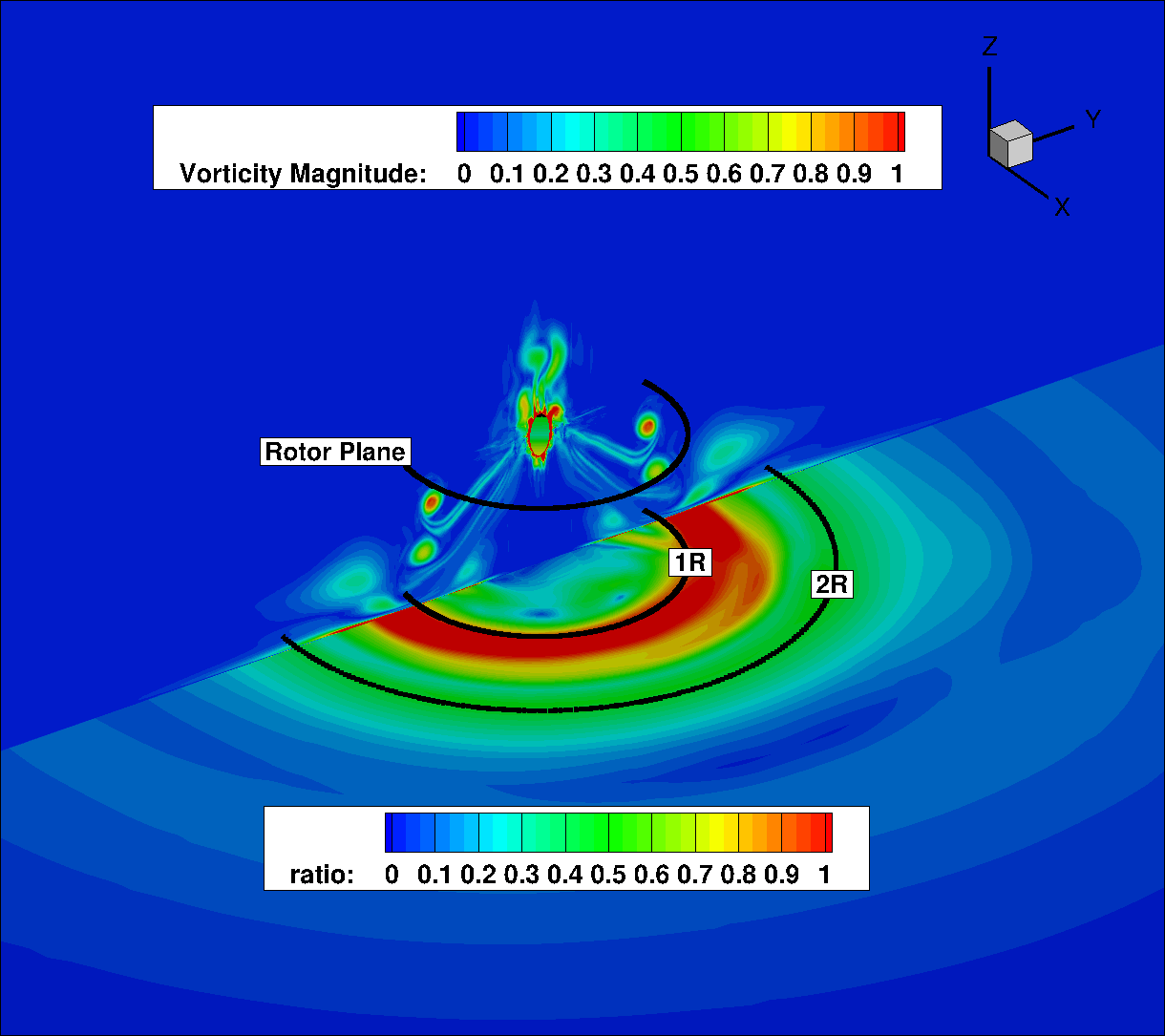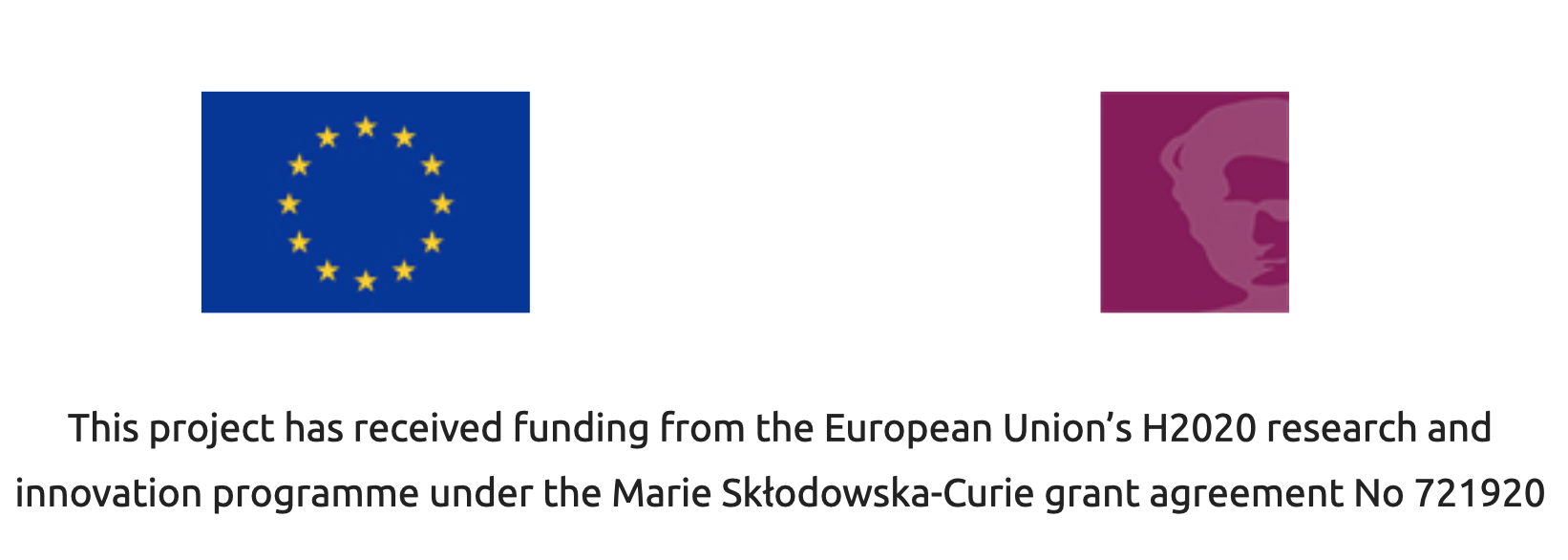Use of HMB3 for simulations of brown-out and white-out
Brown-out and white-out occur when helicopters operate in ground proximity, due to the interaction of the rotorcraft wake with the particles of a loose sediment bed. This interaction can eventually cause the uplift of particles from the ground and their entrainment in the flow. The entrained particles are sand and dust in brown-out and snow and water droplets in white-out. Operating in desert areas or in snow, the number of entrained particles can become extremely high creating a cloud around the helicopter. This cloud of particles affects the rotorcraft structure and equipment, and the pilots’ visual environment.
The entrained particles are advected by the air flow and collide with the aircraft structure. Their impact can generate erosion and damages to the structure.
Despite the importance of erosion effects, the most dangerous consequence of brown and whiteout is the degradation of the pilots’ visual environment. At certain flight and environmental conditions, the cloud created by the rotorcraft wake can completely surround the aircraft. In these conditions of Degraded Visual Environment (DVE), the cloud causes a reduction of the pilot visibility and increases the risk of impact against objects or the ground. The cloud visually moves with respect to the pilot and its motion can give false cues to pilots about the aircraft attitude. This has led to numerous accidents contributing to make brown-out and white-out relevant causes of rotorcraft mishaps.

Particles displacement for test case proposed in [1], rotor full rappresented, side view.

The purpose of this project is to investigate the phenomena, identifying the parameters affecting most brownout and whiteout through detailed simulations of representative test cases.
The influence of the rotor wake on loose sediment beds are investigated through uplift models [2] implemented in commercial and home-made software.
Moreover, the degraded visual environment due to the presence of the cloud and the impact of the particles on the structures and blades are investigated, through the coupling of particles motion equations and modern CFD (Computational Fluid Dynamics) models. This approach permits to estimate the particles position and in conclusion their effects on the rotorcraft. Scaling factors are also used to investigate the effect of different type of aircraft on particle paths.
Safety considerations on the risks due to the outflow and downflow generated by rotor operating IGE (In Ground Effect) have been taken into account, evaluating the wind induced forces that ground personnel can suffer during operation in proximity of a lifting rotor.
Publications
- Rovere, F., Morelli, U., Steijl, R. , Barakos, G. N. and Vigevano, L. (2019) Evaluation of Rotor Blade Models for Rotor Outwash. In: 44th European Rotorcraft Forum, Delft, The Netherlands, 18-20 Sep 2018,
- Rovere, F., Barakos, G. N. and Steijl, R. (2019) Brownout Simulations of Model-Rotors In Ground Effect.
In: 4th edition of the International Cross-industry Safety Conference (ICSC), Amsterdam, The Netherlands,09-11 Oct 2019,
- Rovere, F., Barakos, G. N. and Steijl, R. (2019) CFD Analysis of a Micro-Rotor In Ground Effect. In: 45th
European Rotorcraft Forum, Warsaw, Poland, 17-20 Sep 2019,
- Rovere, F., Barakos, G.N. and Steijl, R. (2020) CFD Analysis of a Micro-Rotor In Ground Effect. In: 2020
AIAA SciTech Forum, Orlando, FL, USA, 06-10 Jan 2020,
- Rovere, F., Barakos, G. N. and Steijl, R. (2020) Particle Tracking Analysis of a Micro-rotor In Ground Effect,
In: 46th European Rotorcraft Forum, Moscow, Russia, 08-11 Sep 2020
- Rovere, F., Barakos, G. N. and Steijl, R. (2021) Safety analysis of Rotors In Ground Effect,
In: AIAA Aviation Forum, online, August 2021
The Project has been shortlisted in TRAVISION 2020: Young Researcher Competition in airborne category (TRAVISIONS 2020 Results)
Video of the presentation of AIAA Aviation Forum :presentation_fr
Contacts
G. Barakos (Professor), George.Barakos@glasgow.ac.uk
F. Rovere (Phd student), federico.rovere@glasgow.ac.uk
References
[1 ] Lee, T. E., Leishman, J. G., & Ramasamy, M. (2010). Fluid dynamics of interacting blade tip vortices with a ground plane. Journal of the American Helicopter Society, 55(2), 22005-22005.
[2] Shao, Yaping, and Hua Lu. "A simple expression for wind erosion threshold friction velocity." Journal of Geophysical Research: Atmospheres 105.D17 (2000): 22437-22443.




